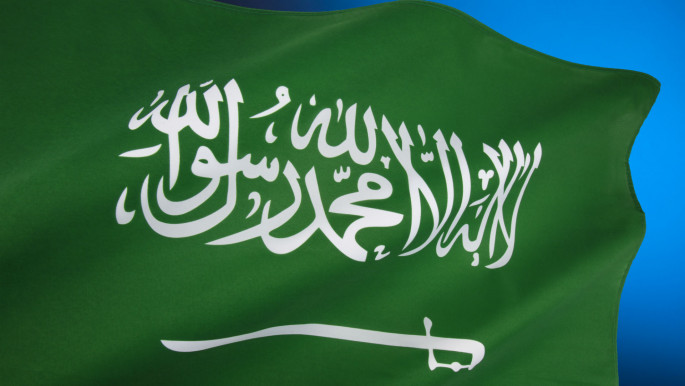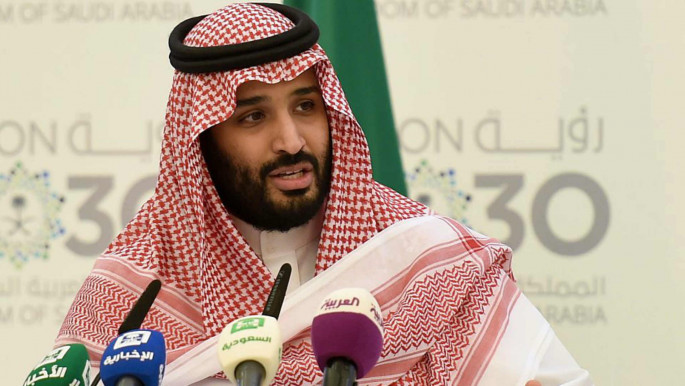Saudi Aramco shifts to new 'crude to chemical' strategy
The transformation comes as result of International Energy Agency's and other leading experts' forecast that demand for petrochemicals such as the building blocks for plastics, will dominate the global oil demand growth, outpacing the demand for transportation fuels which could reach its peak in the coming decade.
More downstream acquisitions
Aramco aims to expand its downstream operations and enhance its resource base hoping to generate maximum added-value from hydrocarbons as refinery-petrochemical integration (RPI) optimises the use of hydrocarbons and improves profitability while diversifying its product portfolio.
Read also: 'China is a good friend to Saudi Arabia': MbS bags $10 billion Beijing oil deal
According to Aramco's chief Amin Nasser, company's supply, trading, and marketing model will mitigate oil price volatility, generate additional revenues, and expand opportunities for conversion industries, local manufacturers, and service.
Jim Krane, author, and Fellow at Rice University's Baker Institute from Texas observes that Saudi Aramco is racing to build and acquire petrochemical capacity as fast as it can.
Petrochemicals is a "climate compliant" use for oil and gas since the feedstock is not combusted.
 |
|
| Read also: Energy investment fuels Saudi relations with Pakistan, India and China |
"Aramco is moving fast so that it can get its capacity built before others, thereby discouraging potential competitors from investing and creating a glut in capacity," he told The New Arab.
Indeed, Aramco's chief announced that company eyes chemical investments worth more than $100 billion over the next 10 years inside and outside the kingdom. Aramco aims to convert about 2-3 million barrels of crude oil per day directly into petrochemical products.
Deal with SABIC will then certainly help Aramco to achieve its goal. Moreover, there is a sound industrial/business logic behind the deal, as the acquisition would provide Aramco with a very extensive research portfolio and excellent chemical management. Aramco and SABIC have already announced a joint crude-oil-to-chemicals project of 400,000 barrels per day capacity, which is expected to become operational in the mid-2020s.
A flagship technology initiative-crude oil to chemicals (C2C) programme, developed by Aramco is expected to play a crucial role in future production and maximise the profit.
This technology, according to Aramco researchers, will remove or streamline several conventional industrial processes, resulting in chemicals that are less expensive to produce while at the same time reducing the carbon footprint associated with the use of oil.
In this context, Amy Jaffe, Senior Fellow for Energy and the Environment and Director of the Programme on Energy Security and Climate Change at the US-based Council on Foreign Relations told The New Arab that Saudi Aramco is a world-class national oil company with strong managerial talent and professional board of directors. This team is well positioned to make smart decisions to navigate the future of energy in the times of the coming global digital revolution.
"Saudi Arabia is fortunate because other national oil companies are not as well positioned with as good an asset base to work from, low costs and a strong technically oriented organization with a well-established internal business analysis process. This gives Saudi Aramco an edge in global markets that will serve them well," she added.
 |
Aramco's chief announced that company eyes chemical investments worth more than $100 billion over the next 10 years inside and outside the kingdom |  |
Unfavourable trends
However, the current global market trends may limit the very high expectations. While the Saudi push toward petrochemicals is a good idea as it allows the country to climb up in the value chain of its oil bonanza and investments in refineries in Asia would ensure the market share of Saudi crude, there are some unknowns that could potentially affect Aramco's plans.
Dr Gal Luft, co-director of the Institute for the Analysis of Global Security [IAGS], a Washington-based think-tank focusing on energy security, told us that many of the petrochemical (non-refining) processes are more cost-effective when the feedstock is natural gas, not crude oil.
The Saudi petrochemical industry will find itself in direct competition with cheap US natural gas which has already created the conditions for a renaissance in US petrochemicals production. The slowdown in Chinese manufacturing is also raising question marks about demand for new petrochemical capacities. It is not clear at all that the Saudi effort is a profitable one.
However, Krane noted that in the long run, plastics demand is expected to grow quickly enough so that the excess capacity is a temporary phenomenon.
Chemicals vs crude
Since Aramco plans to convert millions of barrels into petrochemicals, while total crude production capacity remains unchanged, some wonder if by doing so, Saudis could jeopardise its traditional role as a swing producer.
 |
|
| Read also: What's behind the stalled Saudi Aramco IPO? |
According to Krane, the Saudis have managed to retain a 13 percent share of the global crude oil market since the 1990s. They may seek to increase that share with their ongoing expansion of production. It's just that a greater share of their exports will come in the form of refined products.
Some authors like Luft observes that Saudis may also find themselves diverting too much of their oil into new industries at the expense of their swing production capacity. But in order to respond to these challenges, Saudis need to concentrate on energy efficiency.
Saudi Arabia is one of the few remaining countries where electricity is still generated from oil. Valuable oil molecules are being converted into electrons, 70 percent of which is used for air-conditioning. This is an incredibly wasteful practice for a country that has natural gas and favourable conditions for solar energy. Weaning the power sector from oil would free hundreds of thousands of barrels a day, to a much better uses – petrochemicals being one of them.
The IPO timeline likely to be shifted
While Saudis hope that acquisition of the SABIC could make Aramco a more attractive proposition for global investors many believe that deal with SABIC could push the IPO, already delayed until next year, back further.
Saudis are still hoping to attract a $2 trillion valuation and plan to offer up to five percent of Aramco in the IPO, at a predicted price of $100 billion, in order to move forward with Crown Prince's Mohammed bin Salman's economic transformation plan. However, many remain cautious when it comes to these figures and IPO as such.
Luft stressed that "this IPO is neither likely nor desired as it would expose investors to serious legal jeopardy. A public offering of five percent of a company with the rest of the 95 percent governed by the decisions of a cartel which engages in price fixing, would not pass legal scrutiny in any reasonable jurisdiction."
He said that such IPO would be challenged in the courts and is not likely to see the light of day, certainly not in an American stock exchange.
This, however, does not preclude Saudi plans to expand the offering of Aramco and divert more of the company's portfolio to downstream activities, but Luft cannot see the funding for such ambitious plan coming from a public offering which requires full transparency and accountability.
"In short Saudi Arabia will have to withdraw from OPEC if it wants to go public," he concluded.
Stasa Salacanin is a freelance journalist who has written extensively on Middle Eastern affairs, trade and political relations, Syria and Yemen, terrorism and defence.

![Palestinians mourned the victims of an Israeli strike on Deir al-Balah [Getty]](/sites/default/files/styles/image_684x385/public/2024-11/GettyImages-2182362043.jpg?h=199d8c1f&itok=xSHZFbmc)


![The law could be enforced against teachers without prior notice [Getty]](/sites/default/files/styles/image_684x385/public/2178740715.jpeg?h=a5f2f23a&itok=hnqrCS4x)
 Follow the Middle East's top stories in English at The New Arab on Google News
Follow the Middle East's top stories in English at The New Arab on Google News


